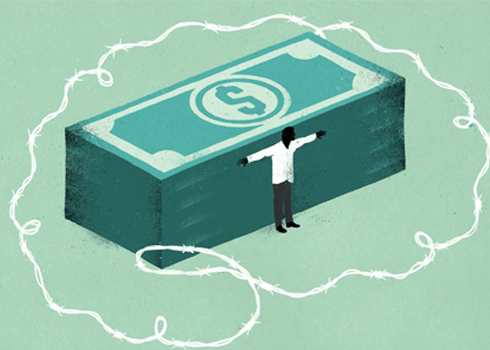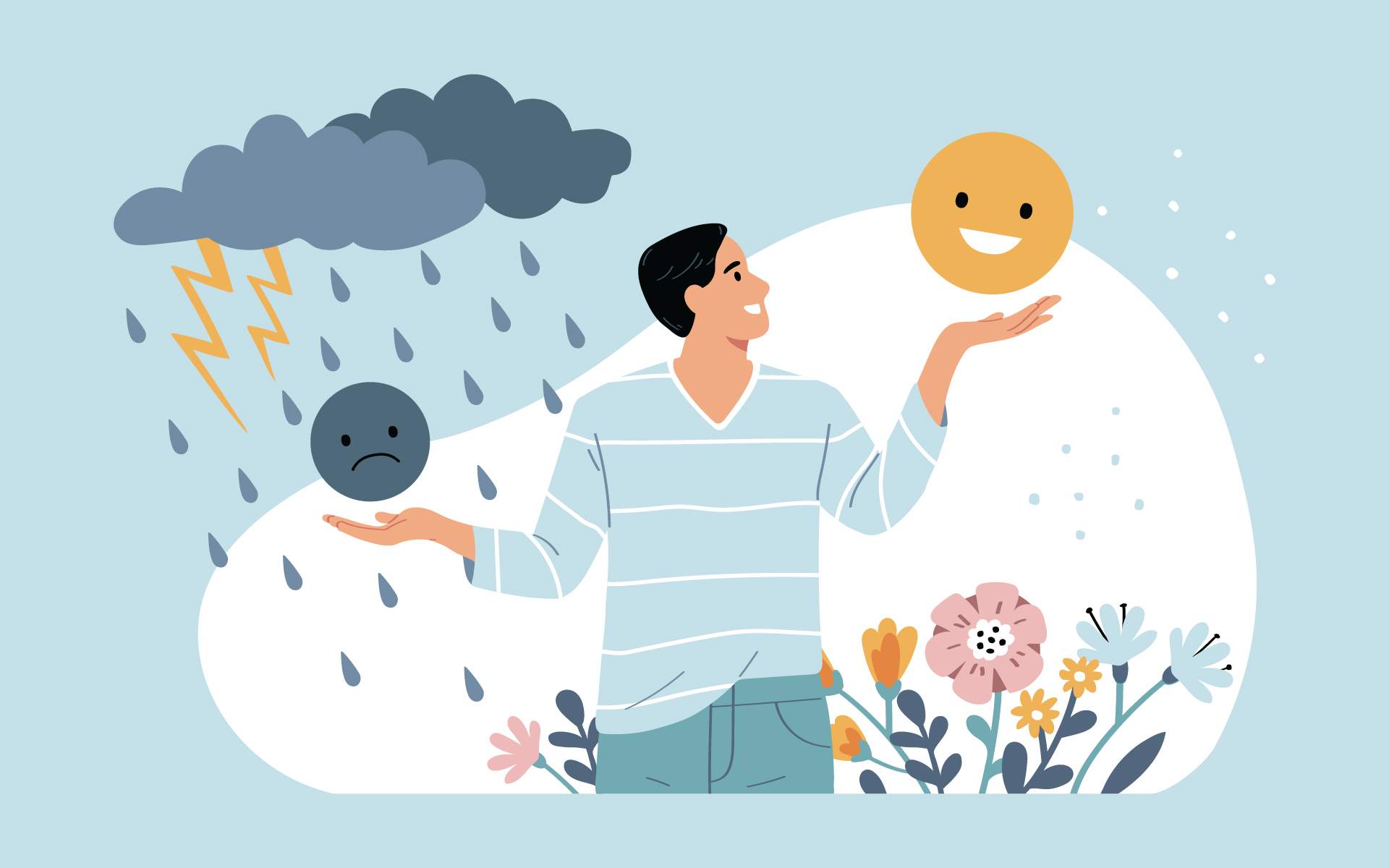One by one, 50 French men and women walked up to the ATM, slid in their card, punched in their PIN, and walked away with a fistful of euros. Another 50, not needing cash, walked past. But none of the 100 simply went on their merry way. Instead, half were stopped by a woman who asked them to answer a short survey on “children and authority,” while half saw a stranger accidentally drop her bus pass a few feet in front of them.
Then the researchers started taking notes: who would help the stranger by answering her survey, and who would call out to the woman that she’d dropped something? Of those who had just withdrawn money 34% were willing to stop to answer the survey, but 62% of those who had not handled money gave their time to the survey taker. Similarly, while 60% of those who’d withdrawn cash told the woman she’d dropped her bus pass, 96% of those who had not just handled money did.
Funny thing, money. It can come between friends, tear apart families, trigger marital blow-ups, open doors or slam them shut, and buy (limited) happiness. But there is one thing money handling is not: rational.
For a very long time, you could be a distinguished, creative, discovery-making economist simply by being a master mathematician. That may not be enough anymore. These days, you’d better know something about the difference between the prefrontal cortex and the amygdala, not to mention the Big Five Personality Traits, for economics is, more and more, incorporating neurobiology and psychology. Economics’ centuries-old archetype, the rational actor whose economic decisions are driven by computer-like calculations—homo economicus—has left the building.
In his place is a sometimes irrational and even infuriating decision-maker, the focus of research by a new breed of behavioral economists and neuroeconomists. Their studies have produced tantalizing findings that show that our financial behavior is even nuttier than anyone imagined.
Take that ATM study (Journal of Socio-Economics, Dec 2013). It builds on findings that money, including whether we’ve just handled it or happen to be looking at it, affects how helpful and generous we are. Earlier studies had found that when people are primed with money-related phrases, or have a stack of Monopoly money (!) in their periphery, they’re less likely to help others. Thoughts about money have also been found to increase the number of solitary activities participants choose. Merely looking at money has made study participants contend more strongly that the poor deserve their fate. Researchers suspect that money activates feelings of self-sufficiency that decrease people’s desire for social contact, including willingness to help others.
By studying how emotions shape money decisions, neuroeconomists are making sense of behaviors that classical economists regarded as inexplicably irrational. For instance, good ol’ homo economicus prefers to have more choices; it’s just logical that with more options one of them is more likely to hit your personal sweet spot (all these flavors of Ben & Jerry’s, love it!). Instead, Angelika Dimoka of Temple University found, real people’s neurons go TILT when confronted by too many choices. As information load increases—Cherry Garcia? Hazed and Confused?—so does activity in a decision-making/emotions-controlling region of the brain called the dorsolateral prefrontal cortex. So far, so good. But beyond a certain point—Caramel Sutra? Chubby Hubby?—this region seems to say, I give up, let someone else decide, and its activity plummets. Simultaneously, emotion circuits previously held in check by the dorsolateral prefrontal crackle with activity. No wonder, as anxiety soars, many of us go for vanilla.
Studies found even having a stack of Monopoly money in sight can make people less likely to help others.
Another puzzle in economics that’s yielding to the new approach is the endowment effect: resistance to swapping something you have even for an identical item. When volunteers are given lottery tickets and asked if they’d be willing to trade theirs for another participant’s, most people say no. Why? Because we’re wired to really, really hate losing. We’re good at anticipating all the ways our decisions can backfire. Imagining the regret of losing a winning ticket we once held is much more powerful than imagining failing to trade for a winner. This “loss aversion” makes no rational sense, but a great deal of emotional sense: the brain is wired to avoid losses, not to win. For example, retirees often spurn stocks in favor of “safe” money market funds with a minuscule rate of return.
Many studies suggest the brain treats losses as twice as powerful as gains, and so would rather miss out on $100 in gains than lose $50. That’s not to say that a preference for avoiding losses, even at the cost of missing out on gains, is immutable. A 2014 study in the Journal of Behavioral and Experimental Economics, for instance, found that risk aversion increases the sadder we are, while loss aversion is mitigated by anger. Lesson: make your 401(k) choices when you’re mad, not sad.
The brain basis for loss aversion may have to do with the fact that neural circuits mediating fear and anxiety overlap with those involved in economic decisions, finds psychologist Elizabeth Phelps of New York University. In particular, the amygdala is involved in decisions where uncertainty is high and loss is a distinct possibility, such as buying, selling, and investing. The amygdala also produces the felt sense of fear and anxiety. Result: deciding whether to buy an annuity, even when you’re well off, can generate throat-constricting anxiety.
In addition to casting light on classic conundrums in economics, adding mind and brain to the analysis of economic decision-making is nudging homo economicus even farther off his pedestal. One would think, or hope, that when people make decisions about housing they sit down with a calculator and carefully plot out cash flow, anticipated income and expense, and consult expert sources on interest rates and property values.
And then there’s reality. Personality traits—openness to new experiences and ideas, conscientiousness, neuroticism, agreeableness, and extraversion—are correlated with preferences for certain kinds of mortgages and basic “own or rent” decisions, Israeli researchers reported in a study of 1,138 people. The super-conscientious tend to prefer fixed over adjustable-rate mortgages, buying over renting, and a 15-year mortgage over a 30-year and thus higher monthly payments—because conscientiousness is associated with risk avoidance and postponing gratification. The highly neurotic make large down payments and prefer buying to renting, which feels less settled, researchers led by Danny Ben-Shahar of Tel Aviv University reported in 2014 in the Journal of Behavioral and Experimental Economics.
The research “falls within the scope of a much larger discussion in the social sciences in general, and in economics in particular, about what constitutes decision-making: the rational view versus that affected by emotional and cognitive biases,” said Ben-Shahar, and shows that when it comes to real estate people “act ‘irrationally,’ as economists say, and not according to traditional economic assumptions.”
For sheer irrationality, however, nothing beats the magical thinking that Ayala Arad of Tel Aviv University discovered in a 2014 study. She told volunteers they could choose any of six amounts of money, from roughly $4 to $6, and put a sticker showing the chosen amount on a blank-faced die. If their sticker came up, when they rolled the die, they’d win that amount. Everyone chose the $6 sticker of course.
Not! Almost one-third chose lesser amounts. Maybe, Arad said, they had a gut feeling that the chance of their sticker coming up depended on the choice they made “and feared being punished for greediness by some higher power.” Take that, homo economicus.
This article also appeared in the April 2015 issue of Mindful magazine.
Subscribe to Mindful‘s print edition or iPad edition.








